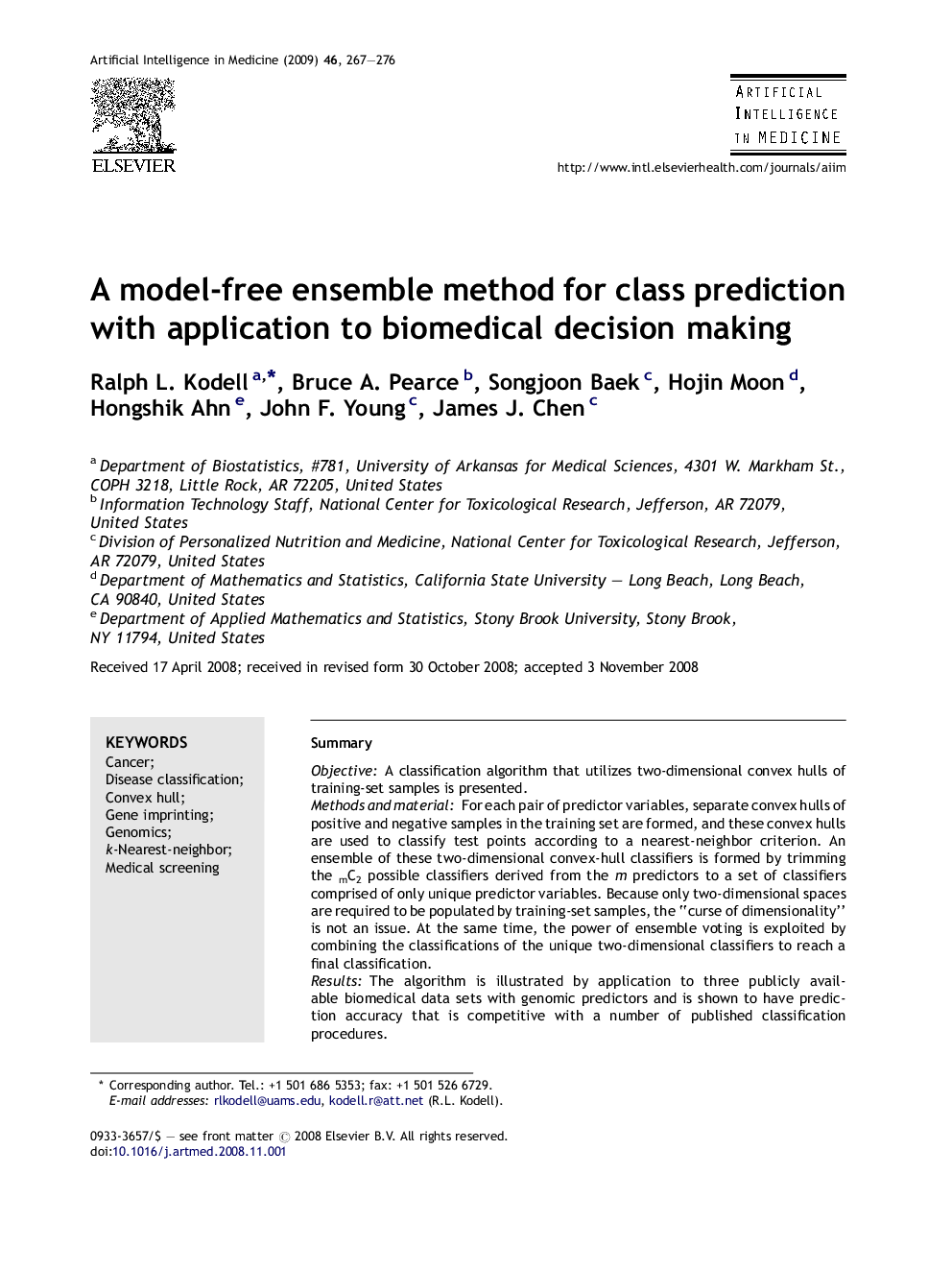| کد مقاله | کد نشریه | سال انتشار | مقاله انگلیسی | نسخه تمام متن |
|---|---|---|---|---|
| 377928 | 658852 | 2009 | 10 صفحه PDF | دانلود رایگان |

SummaryObjectiveA classification algorithm that utilizes two-dimensional convex hulls of training-set samples is presented.Methods and materialFor each pair of predictor variables, separate convex hulls of positive and negative samples in the training set are formed, and these convex hulls are used to classify test points according to a nearest-neighbor criterion. An ensemble of these two-dimensional convex-hull classifiers is formed by trimming the mC2 possible classifiers derived from the m predictors to a set of classifiers comprised of only unique predictor variables. Because only two-dimensional spaces are required to be populated by training-set samples, the “curse of dimensionality” is not an issue. At the same time, the power of ensemble voting is exploited by combining the classifications of the unique two-dimensional classifiers to reach a final classification.ResultsThe algorithm is illustrated by application to three publicly available biomedical data sets with genomic predictors and is shown to have prediction accuracy that is competitive with a number of published classification procedures.ConclusionBecause of its superior performance in terms of sensitivity and negative predictive value compared to its competitors, the convex-hull ensemble classifier demonstrates good potential for medical screening, where often the major emphasis is placed on having reliable negative predictions.
Journal: Artificial Intelligence in Medicine - Volume 46, Issue 3, July 2009, Pages 267–276